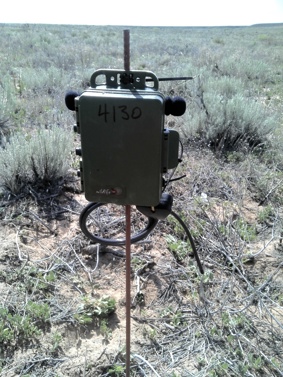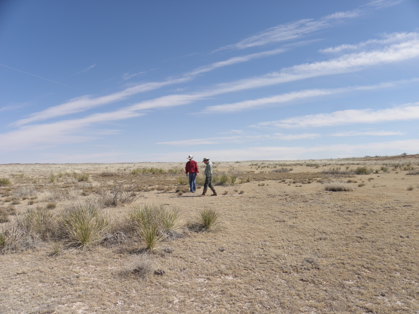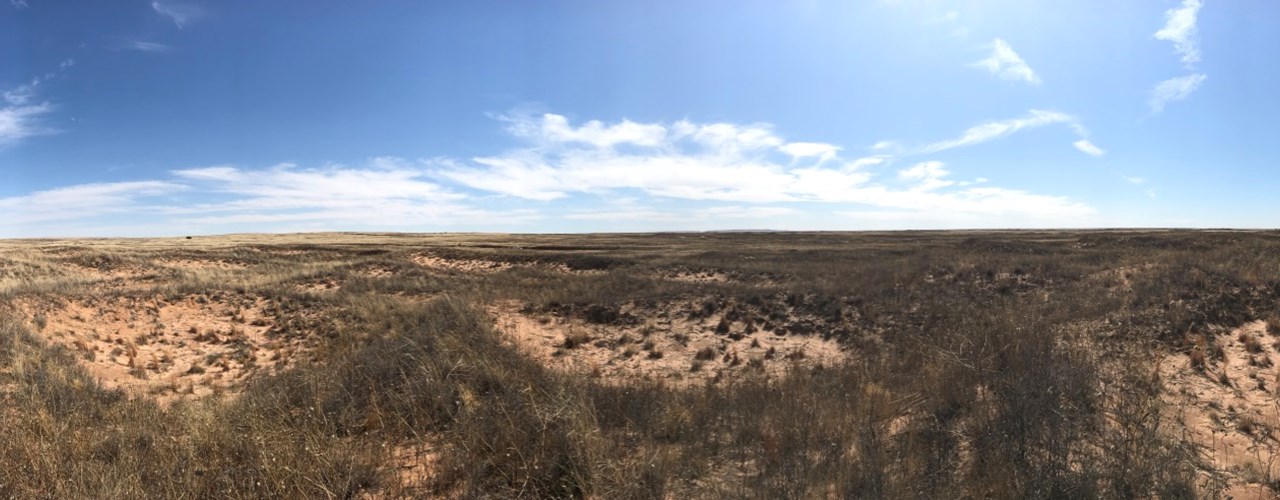Acoustic Monitoring: Redefining innovation on the prairie
In the high plains of eastern New Mexico, a lesser prairie chicken struts through a patch of clipped buffalograss actively seeking a mate. He ruffles his feathers and booms out his signature call, turning the heads of the surrounding females and securing his chances. Courting never looked so good.
However, this brilliant courtship ritual goes undocumented by researchers studying the occurrence of lesser prairie chickens in the region, due to access limitations or inclement weather, inevitably reducing detectability and skewing population metrics—a factor that couldn’t be more detrimental to a formally ESA-listed species. Where access, weather, and manpower limit survey efforts, opportunities to detect lesser prairie chickens are staggeringly low.
As stewards of discovery and efficient conservation, we asked ourselves: What if there was a mechanism that would allow researchers to continuously monitor and document species occurrence at any given time and location no matter the weather, access or manpower limitations?
Innovating for the field
Enter NRI’s research team of Dr. Brian Pierce, Frank Cartaya, and Sarah Turner, the brains behind the latest acoustic monitoring technology in the field.
We’ll explain. Simply put, this technology is an all-weather, programmable, acoustic recording device consisting of one or more microphones connected to a storage device, all powered by an internal battery source. Acoustic monitors run at programmed times allowing any audible noises detectable by the microphone(s) to be recorded and stored on the unit. Acoustic technology is a burgeoning field in wildlife monitoring used for the inventory of secretive or low density species; see: programmable, continuous, unmanned monitoring. This technology collects data in numbers that is not fiscally possible using human surveyors.


(Left photo: A deployed acoustic monitor on Melrose Air Force Range. Right photo: Two Lesser Prairie Chickens engaging in lekking behavior on a lek close to Melrose Air Force Range. Photograph courtesy of Frank Cartaya.)
Changing the game
Acoustic monitoring has the potential to drastically improve the way that researchers conduct wildlife surveys, particularly where study site access is limited. Our work on the lesser prairie chicken occurs on a military installation where vital active trainings are conducted for the preparation of our armed services. Our servicemen and servicewomen must be able to conduct training missions on these landscapes to prepare them for real combat situations—for Americans they’ve sworn to protect. As researchers, our role is to merge the often–times opposing goals of military preparedness and adequate biological sampling, the latter of which is required by the Sikes Act. Acoustic monitoring is one solution that allows for continuous monitoring with minimal impact or interference for extended periods of time.

(Left photo: Dr. Brian Pierce and Cannon Air Force Base Natural Resource Specialist Dr. Charles Dixon survey an active prairie chicken lek close to Melrose Air Force Range.)
Applying the technology
Currently, the NRI research team of Dr. Brian Pierce, Frank Cartaya, and Sarah Turner are utilizing acoustic technology on Melrose Air Force Range in eastern New Mexico to assess avian presence and to monitor for the occurrence of the formerly Endangered Species Act-listed Lesser Prairie Chicken (Tympanuchus pallidicintus). This species is a sensitive prairie ecosystem resident whose population has steadily declined due to habitat fragmentation and degradation. Acoustic monitoring is the primary census method due to training missions on Melrose Air Force Range which prevent the access required to conduct manual (human) lekking surveys. Nevertheless, through the implementation of this groundbreaking technique, the occurrence of transient lesser prairie chickens on the range has been verified after more than five years of no detections. These units have allowed for the collection of more survey minutes per day than would normally be obtainable through traditional human-conducted point count surveys. The implementation of this high-caliber proactive monitoring measure allows NRI researchers and the United States Air Force to raise the bar on the standards of ecological monitoring, while also leading the way in the utilization of novel technology in wildlife management.
So the next time you wonder if a prairie chicken actually clucks in the prairie when no one is around to hear it, the answer here is a resounding yes.
--
Photo Credit: Sarah Turner and Frank Cartaya






